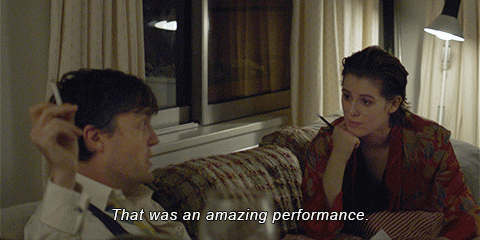Skip to content
Core competencies provide the foundation of the framework, describing behaviors to be displayed by all staff members.Functional competencies are defined by duties and responsibilities assumed by employees for a given job.Core values are principles that influence people’s actions and the choices they make. They are ethical standards for MatcHR and are to be upheld by all staff.
Clear expectations are set, and staff members are guided as to how they can assume and reinforce behaviours in line with the organization’s mission, culture and goals.A shared language is created to describe what is needed and expected in the work environment, thereby providing for reliable and high-quality performance delivery.The various facets of human resources management can be integrated, enhancing consistency in human resources planning, recruitment, learning and development, and performance management, and thereby contributing to the streamlining of human resources operations and ultimately to efficiency gains.Skills gaps are addressed, strengths are further developed and requirements for career progression are clarified.Staff mobility, organizational change and shaping of the organizational culture are fostered.For planning, competencies are applied in job design, which involves the determination of the job content, the requirements to carry out the job and the relationships between the job holder and other staff. In this context, competencies ensure that the attributes, skills and behaviours necessary to achieve the highest performance standards for a given job are specified.For recruitment, competencies form an integral part of the selection process, facilitating the assessment of candidates to determine their suitability for a given job.For performance management and staff development, competencies facilitate the establishment of performance standards against which staff will be assessed, and the identification of individual and MatcHR-wide development priorities.
2nd or 3rd week of January Last week of MayLast week of September
Overall/general feedbackSuccesses based on competency frameworkDo you act in line with our “core values”?Development areas based on competency frameworkThe goals/targets and how/if they have been reachedNext steps e.g. promotion and timeline accordingly.

 Evaluations
Evaluations
Competency Framework
A competency framework is a model that broadly describes performance excellence within an organization. Such a framework usually includes a number of competencies that are applied to multiple roles within the organization. Each competency defines, in generic terms, excellence in working behavior; this definition then establishes the benchmark against which employees are assessed. A competency framework is a means by which organizations communicate which behavior's are required, valued, recognized and rewarded with respect to specific occupational roles. It ensures that staff, in general, have a common understanding of the organization’s values and expected excellent performance behaviors.
VIDEO - GUIDE:
Why do we use competencies?
Using a competency framework enables an organization to successfully align its staff’s skills, capabilities and knowledge with organizational priorities, resulting in business improvement and efficiencies. Therefore, a well structured and well-defined competency framework plays a key role in accomplishing an organization’s goals in line with its mission and mandate.
More specifically, competencies ensure that:
As the figure below shows, the competency framework is the basis for these 4 elements of HR.


Performance Management
In order to make sure both MatcHR and you will benefit from the “cooperation”, it is key to manage your performance! Not only do we want the results to get better, it’s also important that you develop! Therefore, we have a performance management framework in place that we will use as a guideline during your employment. As a start, we use the competencies crucial for the role. And we have carved out the ideal career path, but we do know that every individual (thank God) is different. On a regular basis we will provide feedback and see how you are progressing and whether you are still on track to make your next step in your career. And 3 times a year we do a formal 360-degree feedback round with (a minimum) of 2 of your colleagues that work closely with you. One of these is even with a broader group to get a good idea of how you operate within MatcHR.


Formal evaluation moments
We will have a formal evaluation of your performance 3 times a year. During these meetings we gather feedback, provide feedback and set new goals for the next period. Moreover, these are the official moments for promotion 🌱. These are set dates for everyone at MatcHR and will take place in:
Who evaluates who?
The table below shows who evaluates who during the different review moments. During the January review meetings, it is necessary that the people evaluating you have worked with you directly in the past year. So, if you have worked with 2 different recruitment leads, its necessary to ask them both for feedback. If there is no-one in the role of the person who should be evaluating, take your manager as the one evaluating you or ask him/her for advice.
For the sourcing function, please make sure that during the January review you receive at least 4 reviews! Below is a guideline. Please discuss with your manager who is most relevant to ask for feedback.
Process
The basis for the formal evaluation is the competency framework that we have created for each role. 2 times a year, your line manager will rank each competency on a scale of 1-5 and you will do the same. During the 3rd evaluation we will do a complete 360-degree assessment. Based on this input we will evaluate whether you are on track and/or on what points you need to improve. We also ask you to evaluate yourself according to this matrix. Be honest about yourself and don't be afraid to point out the things you think you excel in and what parts you see that you can improve on.


How to use the competency framework
When you need to review yourself and your team members, you should use a structured and honest approach. First take 5 min to write your first impression and thoughts. This will give you an idea of how you think of your/your teammate’s performance.
After that, open the competency framework and select the level of the person you are reviewing. In principal, the description per competency should be covering the abilities of the person completely.
If you think the person is doing everything described in the competency, have a look at the next level for this competency. An indication of a rating of 4 or 5 can be the person doing already tasks that are for the next level. For example, if a Associate Talent Sourcer is ticking all the boxes under the competency curiosity, see if he/she already shows elements of curiosity for the Talent Sourcer. If yes, then a person definitely deserves a rating of 4. The other way around, if a person is not at all showing signs of the competency required for his/her level, have a look at the level below and rate the person with a 2/3.
NOTE: please be aware of the fact that scoring a 3 during the first year of your role is completely normal. It would be strange to have a 4 on all competencies in the first period. And if so, please connect with the management team to see why the person is in too low a role.
Next steps
When we have gathered all the input, a one-on-one session will be scheduled between you and your line manager. This will be the perfect time to be open and honest, say what you think and to discuss the following topics
A week later we will set a follow-up conversation to discuss your development goals for the coming period. Your short-term development plan will be set and your long term development plan will be adjusted in line with the feedback from the review.
Other evaluation moments
In your first two weeks we will go through your own 30/60/90 day plan. Everybody’s 30/60/90 day plan consist out of the KPI’s below and is adjusted to fit your personal goals. We ask more experienced hires to make their 30/60/90 day plan as a round in their application process. We use this as a start to create their 30/60/90 day plan. For less experienced hire we already have a 30/60/90 day set out which we adjust per month.
1. Business – where do you need to be at the end of the month. For example source 50 candidates for client X
2. Client – Understand what the role of the client is exactly
3. Operation – pitch what MatcHR does
4. Team/Stakeholder Management – organize a team event
5. Personal development– based on your Short Term development Plan. For example, be more analytical and do analyses in Google Drive
If your manager hasn’t invited you to discuss the 30/60/90 day plan in your first 2 weeks make sure to proactively invite him/her to do so (and wake him/her up!). Same goes for the evaluation moment. Don’t forget to provide feedback as well and come prepared.
Short term development plan
The short term development plan helps you to define areas in which you want to develop and grow as a professional. It is not used for formal evaluation purposes, but it is really there for you. In it you identify in which areas you want to develop, what you will do to develop and how others can help you. E.g. if you aim to be more structured or want to improve your English skills you will write that down in your short term development plan and identify how your colleagues can support you. In general we advise to focus on a limited number of prioritized development areas (max 3) as some focus is required to develop.
You will start with your short term development plan at the end of your first month and you will review it at the end of every month. Your main development topics will also be incorporated in your one on ones and depending on what support you require from your colleagues potentially in daily meetings. Three times a year we will perform feedback of which the output will be incorporated in your short term development plan.
All our short term developments plans are shared and are saved on one drive under 'team'. We encourage you to read the ST dev. plans of your colleagues. You will find Adriaan and Maarten's ST dev. plans here as well. This will only help you in supporting your colleagues and/or getting advice on your own ST dev. plan.
Want to print your doc?
This is not the way.
This is not the way.

Try clicking the ··· in the right corner or using a keyboard shortcut (
CtrlP
) instead.